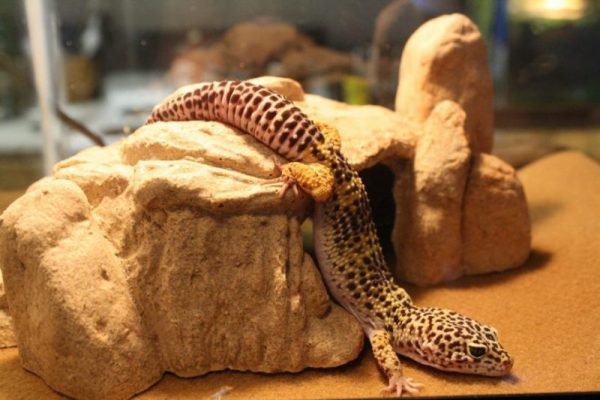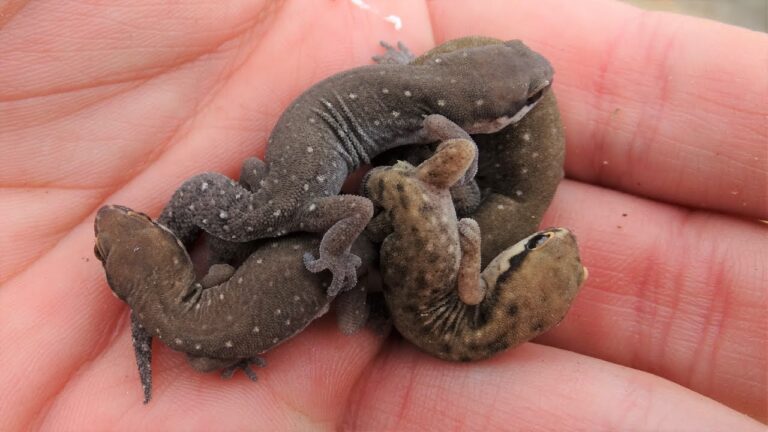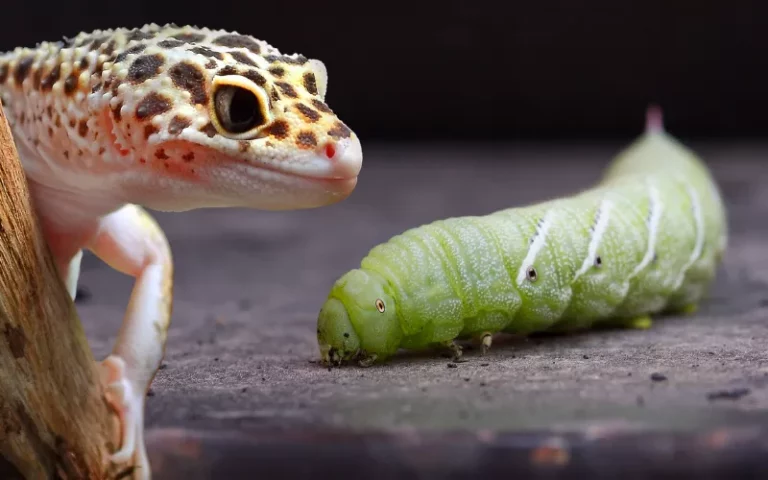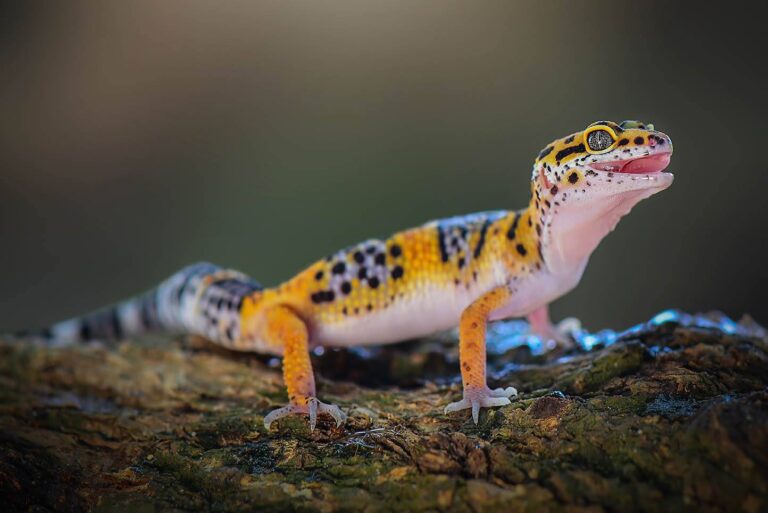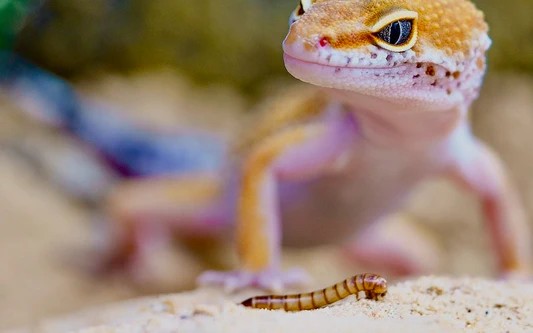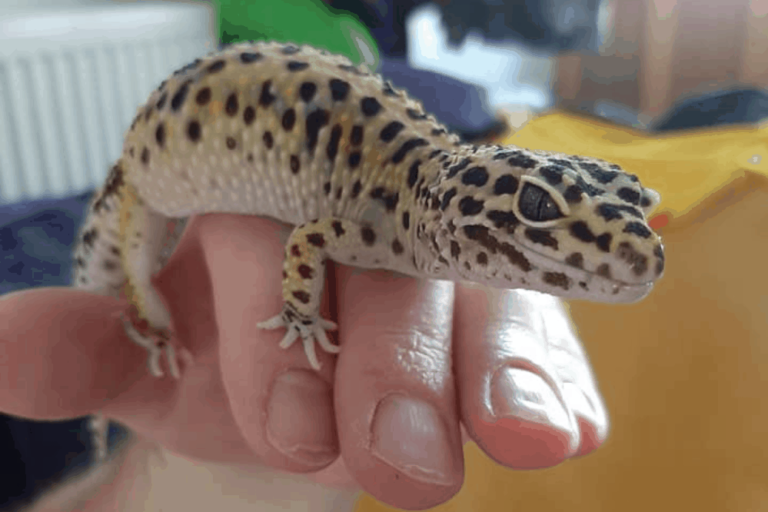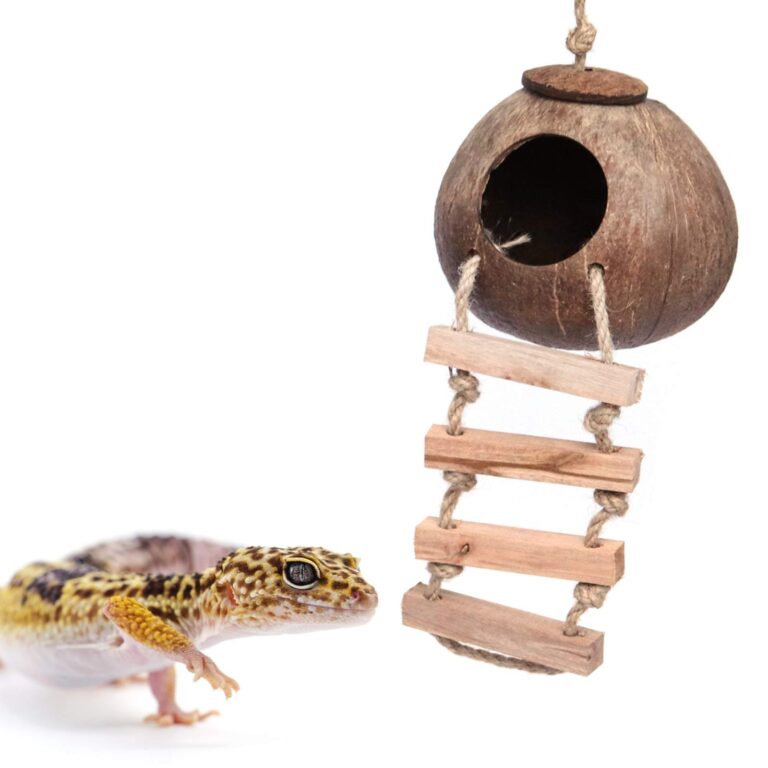Do Leopard Geckos Need Light At Night? The Nocturnal World
As I peered into the softly lit terrarium, a mesmerizing sight greeted me. A leopard gecko rested comfortably on a smooth rock, its vivid orange and black-spotted skin gleaming in the gentle glow of a moonlight bulb. It moved purposefully, its captivating eyes scanning its surroundings.
However, with their intriguing nocturnal behavior and unique appearance, have long fascinated reptile enthusiasts. As someone who shares this fascination, I often wonder about their well-being, particularly at night. One question keeps coming up: Do leopard geckos require nighttime lighting?
No, they don’t require nighttime light. They’re great in the dark thanks to their night vision. Light at night can mess up their natural routine, stress them out, and make them sick. So, it’s best to let them enjoy the dark when it’s bedtime.
Want to know more?
Let’s dive into this adventure and uncover the truth about their nighttime needs.
What Is The Ideal Lighting Setup For Leopard Geckos?
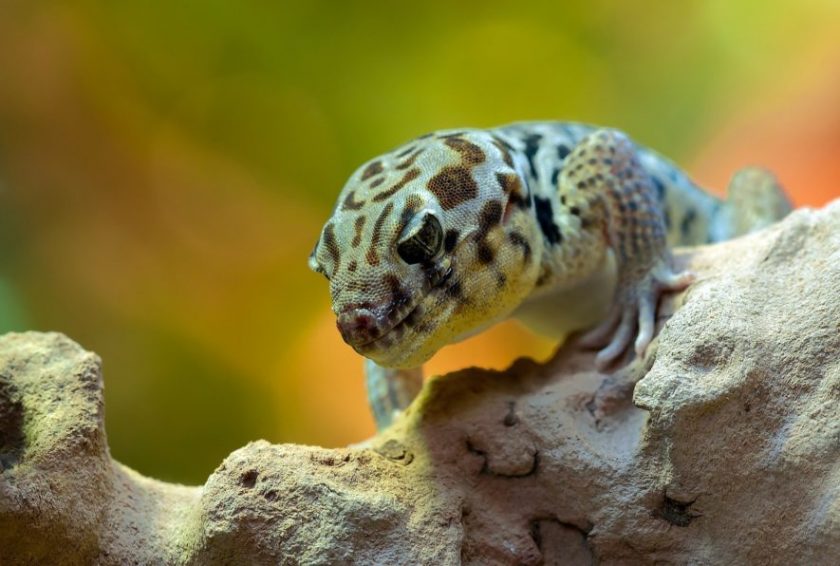
If the natural window light in your space falls short of meeting the essential lighting and heating requirements for your beloved leopard gecko, fret not. There are several effective options at your disposal:
Daytime Bulbs: These versatile bulbs, often referred to as “light and heat daylights,” offer a balanced combination of illumination and warmth. Opt for bulbs that do not emit UV radiation and fall within the wattage range of 100 to 150 watts. These specifications are ideally suited to cater to the specific needs of leopard geckos.
Light Only Bulbs: Daytime bulbs like incandescent, fluorescent, and UV bulbs are perfect for providing light to your gecko during the day. You can easily turn them off at night without losing a heat source. When choosing these bulbs, aim for ones with 10.0 UVB or less, as too much UVB can harm your gecko’s eyes and skin.
Keep in mind that screen tops can block some UV, so not all of the 10% UV will reach your gecko. You can also use these bulbs alongside a heating element like a ceramic heat bulb or under-tank heater for excellent results.
Ceramic Heat Bulbs: Designed to emit heat without producing light, ceramic heat bulbs can significantly elevate the temperature within your gecko’s enclosure. Depending on the size of your gecko’s habitat, consider a wattage rating ranging from 100 to 150 watts. This ensures that your pet enjoys a cozy and thermally regulated environment.
Heat Mats: It offer a convenient solution for maintaining an optimal temperature in your gecko’s enclosure. These mats can be affixed to the tank’s bottom or sides to emit a gentle and consistent warmth. While they may not reach the same temperature levels as ceramic heat bulbs, they are a more energy-efficient option due to their lower wattage.
In the event that natural lighting falls short, these lighting and heating options will help you create a comfortable and conducive environment for your leopard gecko’s well-being.
How Long Should You Leave The Bulbs and Heat Mats On?
Maintaining the day and night cycles that mirror the natural desert habitat of your leopard gecko is paramount for their well-being. During the summer months, it’s essential to provide 14 hours of daytime illumination and 10 hours of uninterrupted darkness at night. In the winter, this cycle shifts to 12 hours of each.
To streamline this process and eliminate the need for manual adjustments, employing an automatic timer is highly recommended. This not only frees you from the task of manually toggling your gecko’s lights but also facilitates a smoother transition between the two seasonal patterns, which is crucial for your gecko’s comfort.
Further, the most effective approach is to gradually extend or reduce the daily lighting duration in increments of 15 to 30 minutes over a span of 4 to 8 weeks. This gradual adjustment ensures a seamless transition for your leopard gecko, preventing any abrupt changes that might stress them.
However, it’s important to note that your pet should always have access to a heat source 24/7, regardless of the season. This constant heat source is crucial to maintaining their core body temperature and overall health.
What Time Should I Turn My Leopard Gecko’s Light Off At Night?
Leopard geckos hail from the Middle East and Asia, regions characterized by distinct seasonal variations in daylight. In the summer, daylight hours extend to approximately 14-15 hours, while in the winter, they shorten to 9-10 hours. To replicate this natural rhythm, it is essential to adjust their habitat lighting accordingly.
In addition, we highly recommend the use of an automatic timer, such as the one linked here, for precise control. During the summer months, program the timer to activate their lights at 8 AM and deactivate them at 10 PM, granting your geckos 14 hours of daylight. In the winter, modify this schedule to provide 12 hours of light by having the lights switch off at 8 PM.
However, it’s crucial to note that transitioning between these seasonal lighting cycles should not involve abrupt shifts. To faithfully mimic the progression of seasons and ensure your geckos’ well-being, introduce gradual adjustments.
Also, over a minimum period of four weeks, incrementally modify the lighting duration by a few minutes each day. This gradual transition aids in maintaining the naturalistic conditions your leopard geckos thrive, promoting their overall health and comfort.
What should you do if you leave your leopard gecko’s lights on all night?
If, by mistake, you accidentally leave your leopard gecko’s lights on throughout the night, there’s no need to panic. Your pet will generally be just fine, although they might exhibit reduced activity for a day or two. However, this temporary disruption should not cause undue concern, as they will swiftly return to their normal behavior.
However, it’s essential to avoid a common misstep in attempting to rectify this situation: turning off the lights during the day to compensate for the overnight illumination. This approach exacerbates the issue by completely reversing the lighting cycle, which can be stressful for your gecko.
Instead, adhere to the established lighting schedule you’ve set for your pet. Ensure that the lights are consistently turned off at night as per their natural sleep-wake cycle. Given a bit of time, it will naturally readjust and resume its regular behavioral patterns without any major complications.
Leopard Gecko Lighting At Night
Nighttime lighting for them serves a unique purpose – it allows you to observe your geckos during their evening and nighttime activity periods, resembling a kind of artificial moonlight while also providing a subtle heat source. There are primarily three types of night lights available:
Red Lights: These are often used as night lights and heaters, with some running continuously. They are frequently labeled as “infrared,” though it’s worth noting that while they emit heat in the infrared spectrum, the visible light they produce is red.
Also, quality bulbs, such as the Zoo Med Nocturnal Infrared Incandescent Heat Lamp, are made from red glass to minimize visible light emission and prevent disruption to your gecko’s day-night cycle.
Blue Lights: Blue night lights, like the Exo Terra 100 Watt Night Heat Lamp, create a bluish moonlight-like ambiance in your gecko’s enclosure. While they provide a natural appearance, there is little known difference in terms of disturbance compared to red lights. Blue lights emit minimal heat and don’t interfere with the gecko’s nocturnal temperature drop.
“Black” Lights: Some manufacturers offer “black lamps,” such as the Zilla Night Black Heat. These bulbs claim to emit minimal visible light, casting a discrete purplish glow while supplying heat. However, their impact on them vision remains uncertain, and their superiority over red and blue counterparts is yet to be confirmed. Black lights are used similarly to red and blue lights.
It’s important to consider that while these nighttime lighting options can be used to observe your geckos, they are not a necessity. If used, it’s advisable to only keep them on as long as you need to observe your geckos and not throughout the entire night.
Additionally, recent research suggests that even though they may not see the color red, they may still perceive the light itself, akin to how colorblind individuals perceive red.
Common Mistakes to Avoid When Setting Up Leopard Gecko Lighting
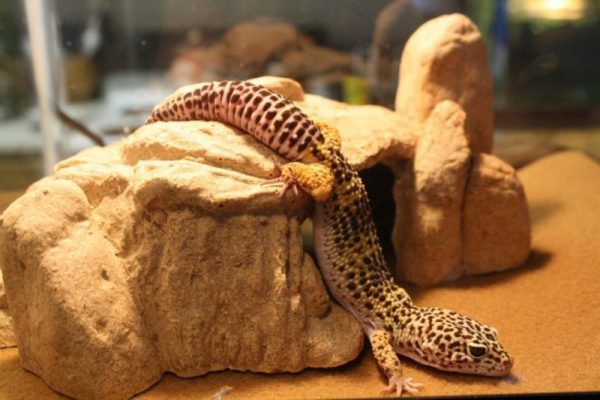
- Avoid using bright lights throughout the day and switch to a red light at night. They require a minimum of 10 hours of darkness to maintain a proper circadian rhythm for a healthy and long lifespan.
- Using colored nightlights for heat can disrupt your gecko’s day/night cycle just like any other light source. Stick to appropriate heat sources for maintaining nighttime temperatures.
- Keeping them in total darkness is a mistake. While they may be more active in low light conditions, they are primarily crepuscular, not nocturnal, and still require some ambient light during the day.
- Avoid UVB coil bulbs as they provide unreliable UVB concentrations across a small area. Instead, opt for a UVB tube light and replace it every 12 months to ensure your pet gets the necessary UVB exposure.
- Using lighting elements that also produce heat, such as halogen bulbs, without proper control equipment can be dangerous. Without regulation, the enclosure may overheat and harm them.
- Not using a timer to maintain a consistent lighting schedule can lead to irregular lighting patterns, which can stress your gecko. A timer ensures a reliable day/night cycle.
- Place the light directly above the tank rather than on the sides. They have “eyebrows” to shade their sensitive eyes, which won’t work if the light is on the tank’s sides. Lamps resting on the mesh lid are acceptable.
- Ensure the light bulb’s wattage is suitable for the size of your tank. A bulb that is too powerful can generate excessive heat.
- Maintain a distance of at least six inches between any light source and your pet. If your gecko can climb to the tank’s lid, ensure the lamp is securely suspended above the tank.
- Regularly check the temperature beneath the heat lamp to ensure it remains within the appropriate range.
- Always use protective guards if it can access the heat bulb, preventing accidental burns.
- Adhere to the manufacturer’s guidelines for the proper use of lighting equipment to ensure the safety and well-being of it.
- Offer hiding spots and caves on both the well-lit and darker sides of the tank, catering to your pet need for security and thermoregulation.
FAQs
Does Your Leopard Gecko Need UVB Rays?
No, Leopard geckos do not require UVB rays for survival, as they are primarily nocturnal and obtain most of their necessary nutrients from their diet.
Are Incandescent Bulbs Okay For Leopard Geckos?
No, Incandescent bulbs are not recommended for leopard geckos, as they emit heat but not the necessary UVB or UVA rays these reptiles require.
Do I need To Leave The Light On After Feeding My Leopard Gecko?
No, it’s not necessary to leave the light on after feeding your leopard gecko. In fact, it’s better to maintain a natural day-night cycle.
How Much Light Do Leopard Geckos Need Per Day?
Leopard geckos require 10-12 hours of darkness at night for proper rest. During the day, ambient room light is typically sufficient; no direct sunlight is necessary.
Can I Use Natural Window Light For My Leos?
Yes, Natural window light can be used for leopard geckos but ensure it’s not direct sunlight, which can overheat the terrarium. Indirect, filtered natural light is safer.
Final words
In conclusion, I’ve learned that leopard geckos don’t require light at night. They have excellent night vision and are adapted to function in darkness. Adding light at night can disrupt their natural behaviors and even harm their well-being.
Also, it’s important to respect their nighttime needs and keep their environment dark during the evening hours. This simple adjustment can help ensure the health and happiness of these fascinating reptiles.

